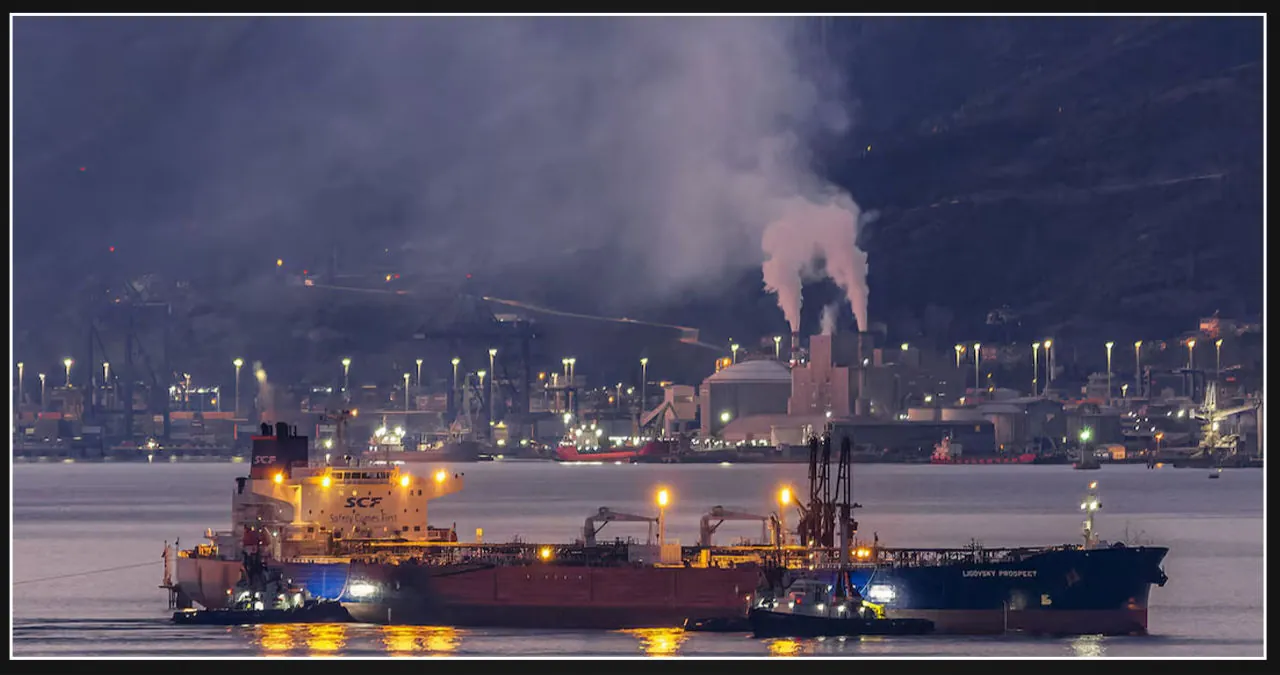Chinese and Indian refiners are expected to increase their oil imports from the Middle East, Africa, and the Americas due to new U.S. sanctions imposed on Russian producers and ships. This shift in sourcing is anticipated to have an impact on both prices and freight costs, according to traders and analysts.
On Friday, the U.S. Treasury implemented new regulations.
The US has imposed sanctions on the Russian oil companies, Rosneft and Surgutneftegas, as well as 183 vessels involved in shipping Russian oil. These sanctions aim to target the revenues that Moscow has been using to fund its ongoing conflict with Ukraine.
Many tankers have transported oil to India and China due to Western sanctions and a price cap imposed by the Group of Seven countries in 2022. This shift in Russian oil trade from Europe to Asia has resulted in the utilization of these tankers. Additionally, some tankers have been involved in shipping oil from Iran, which is also facing sanctions.
According to two Chinese trade sources who requested anonymity due to lack of authorization to speak to the media, the new sanctions will have a significant impact on Russian oil exports. They anticipate that Chinese independent refiners will be compelled to reduce their refining output in the future.
Global oil prices reached their highest point in months on Monday, surpassing $81 a barrel, due to the anticipated disruption in Russian supply.
According to a note from Kpler’s lead freight analyst Matt Wright, among the recently sanctioned ships, 143 are oil tankers. These tankers were responsible for handling over 530 million barrels of Russian crude last year, accounting for approximately 42% of the country’s total seaborne crude exports.
Around 300 million barrels were sent to China, with the majority of the remaining barrels being shipped to India.
According to Wright, the imposition of these sanctions will have a significant impact on the number of ships available for transporting crude oil from Russia in the near future. As a result, freight rates are expected to increase.
According to a trader based in Singapore, the tankers that were specifically assigned for this purpose have transported nearly 900,000 barrels per day (bpd) of Russian crude to China in the last year.
“It’s going to plummet,” he added.
In the first 11 months of last year, India witnessed a 4.5% year-on-year increase in its imports of Russian crude, reaching 1.764 million barrels per day (bpd). This accounted for 36% of India’s total imports. Similarly, China also experienced a 2% growth in its Russian crude imports, including pipeline supply, totaling 99.09 million metric tons (2.159 million bpd). This constituted 20% of China’s overall imports during the same period.
China primarily imports Russian ESPO Blend crude, which is sold above the price cap. On the other hand, India mainly purchases Urals oil.
According to Vortexa analyst Emma Li, the enforcement of strict sanctions could result in the suspension of Russian ESPO Blend crude exports. However, this outcome would depend on whether U.S. President-elect Donald Trump decides to lift the embargo and whether China recognizes the sanctions.
According to the sources, the imposition of new sanctions will compel China and India to once again turn to the global oil market for their supply needs. As a result, they will likely seek out additional sources from the Middle East, Africa, and the Americas.
The demand from China has led to an increase in spot prices for Middle East, Africa, and Brazilian grades in recent months.
As the availability of Russian and Iranian oil decreased and their prices rose, they were included in the mix.
An Indian oil refining official mentioned that prices for Middle Eastern grades are already increasing.
“We have no choice but to rely on Middle Eastern oil. It’s possible that we may also need to consider using oil from the United States.”
According to another Indian refining source, the sanctions imposed on Russian oil insurers will likely result in Russia pricing its crude below $60 a barrel. This strategy would allow Moscow to maintain the use of Western insurance and tankers.
According to Harry Tchilinguirian, head of research at Onyx Capital Group, Indian refiners, who are the primary consumers of Russian crude, are unlikely to wait and see what happens. They will be actively searching for alternative sources, such as Middle Eastern and Dated-Brent-related Atlantic Basin crude.
According to the expert, the Dubai benchmark is expected to gain strength in the future due to the anticipated competitive bidding for February loading cargoes such as Oman or Murban. This will result in a narrower Brent/Dubai spread.
In the previous month, the Biden administration took action to designate additional ships involved in the transportation of Iranian crude oil in advance of their intended targets.
The Shandong Port Group is anticipating favorable changes under the incoming Trump administration.
Ships have been visiting ports in the eastern Chinese province, calling into its ports.
According to Tchilinguirian, China, the biggest purchaser of Iranian crude, will likely shift its focus to heavier Middle Eastern oil and increase its consumption of Canadian crude from the Trans-Mountain pipeline (TMX).

